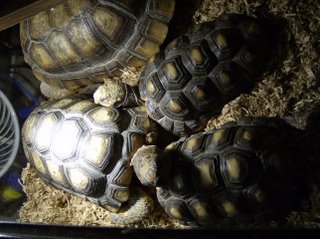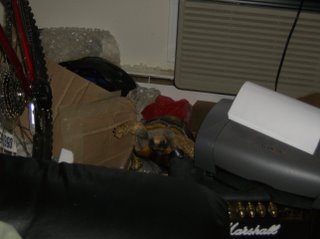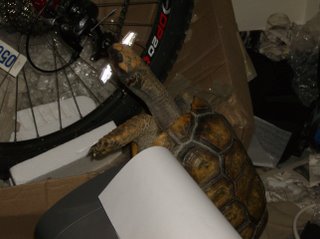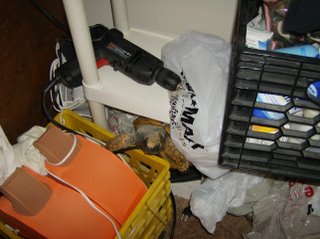Interesting Turtle and Tortoise Facts
Thank you to the Animal Planet website www.animal.discovery.com.
Veterinary & Aquatic Services Department, Drs. Foster & Smith, Inc.
Some interesting facts about turtles and tortoises:
Turtles have been on the earth for more than 200 million years. They evolved before mammals, birds, crocodiles, snakes, and even lizards.
The earliest turtles had teeth and could not retract their heads, but other than this, modern turtles are very similar to their original ancestors.
Several species of turtles can live to be over a hundred years of age including the American Box Turtle.
One documented case of longevity involves an adult Indian Ocean Giant Tortoise that when captured as an adult was estimated to be fifty years old. It then lived another 152 years in captivity.
Turtles live on every continent except Antarctica
Turtles will live in almost any climate warm enough to allow them to complete their breeding cycle
While most turtles do not tolerate the cold well, the Blanding's turtle has been observed swimming under the ice in the Great Lakes region
Turtles range in size from the 4-inch Bog Turtle to the 1500-pound Leathery Turtle
North America contains a large variety of turtle species, but Europe contains only two species of turtle and three species of tortoise
The top domed part of a turtle's shell is called the carapace and the bottom underlying part is called the plastron
The shell of a turtle is made up of 60 different bones all connected together
The bony portion of the shell is covered with plates (scutes) that are derivatives of skin and offer additional strength and protection
Most land tortoises have high domed carapaces that offer protection from the snapping jaws of terrestrial predators. Aquatic turtles tend to have flatter more aerodynamically shaped shells. An exception to the dome-shaped tortoise shell is the Pancake Tortoise of East Africa that will wedge itself between narrow rocks when threatened and then inflates itself with air making extraction nearly impossible
Most turtle species have five toes on each limb with a few exceptions including the American Box Turtle of the carolina species that only has four toes, and in some cases, only three
Turtles have good eyesight and an excellent sense of smell. Hearing and sense of touch are both good and even the shell contains nerve endings
Some aquatic turtles can absorb oxygen through the skin on their neck and cloacal areas allowing them to remain submerged underwater for extended periods of time and enabling them to hibernate underwater
Turtles are one of the oldest and most primitive groups of reptiles and have outlived many other species. One can only wonder if their unique shell is responsible for their success


















